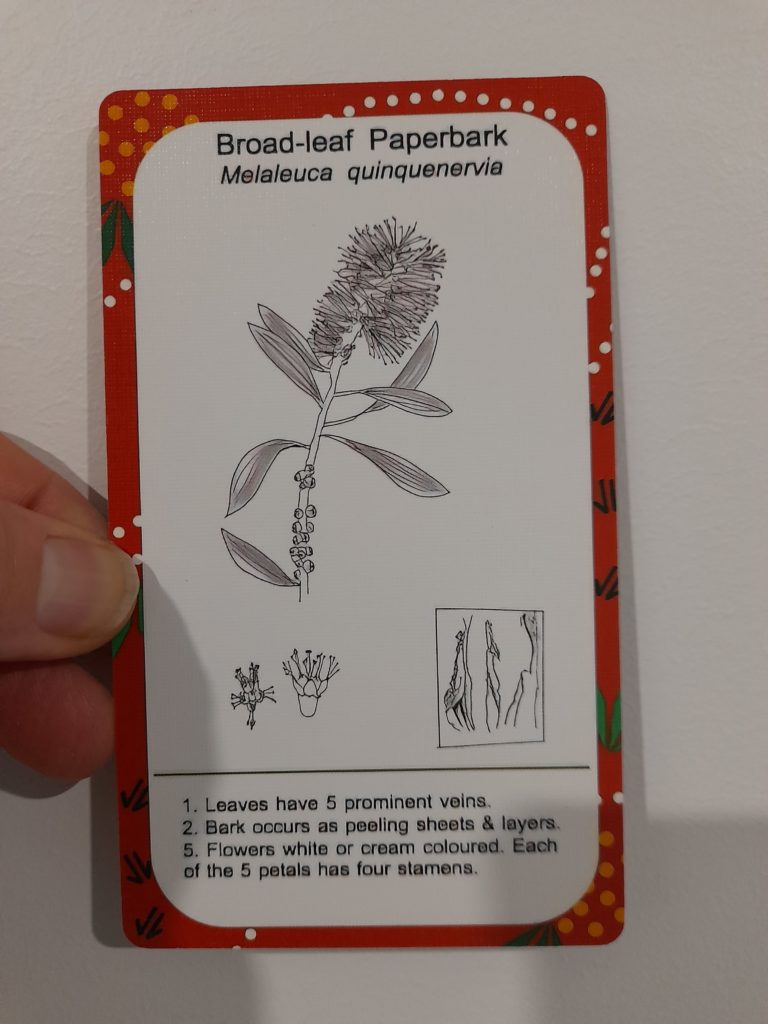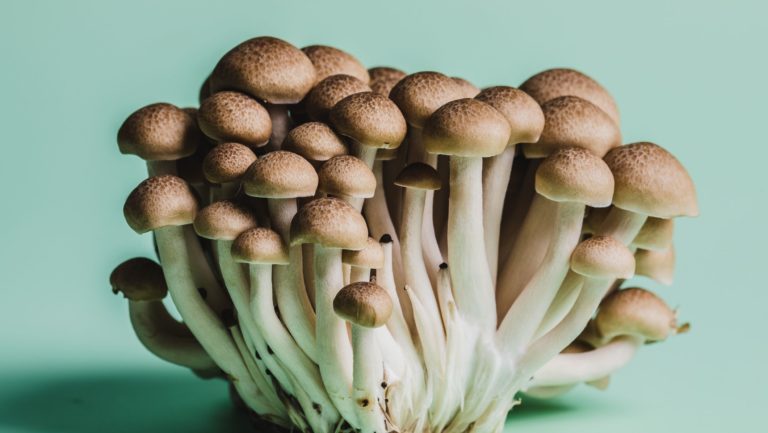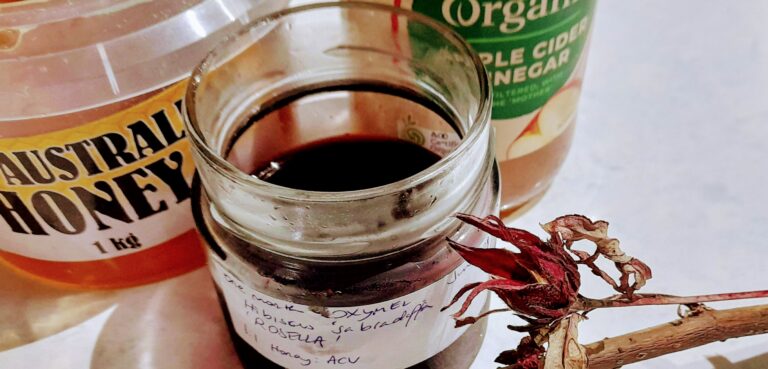From tree to tea – meet my new friend Mel
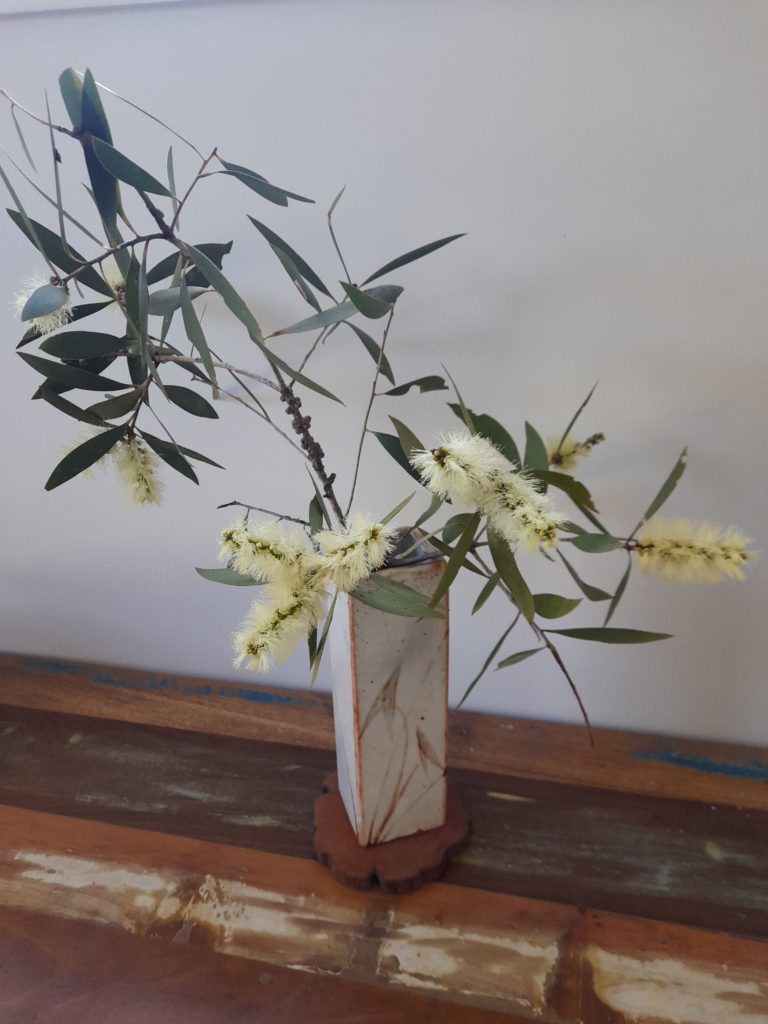

For thousands of years Australian Aborigines have utilised the Broad-leaf Paperbark (Melaleuca quinquenervia) or Coastal Paperbark as a food, medicine and daily domestic item.
She (‘Mel’) grows into a tall (to 25m) tree in areas of eastern Australia where there is plenty of water to keep her roots moist. These species grow northwards from Sydney and have been delighting me in my new home.
Melaleucas are sometimes referred to as tea tree (which you might know of from tea tree oil), but they are more correctly named paperbarks. There are approximately 300 species nationwide including the Callistemon genus. Some authorities include Callistemons in the Melaleuca genus. This group of plants consist of evergreen trees and shrubs, with aromatic foliage and distinctive bottlebrush shaped flower spikes.
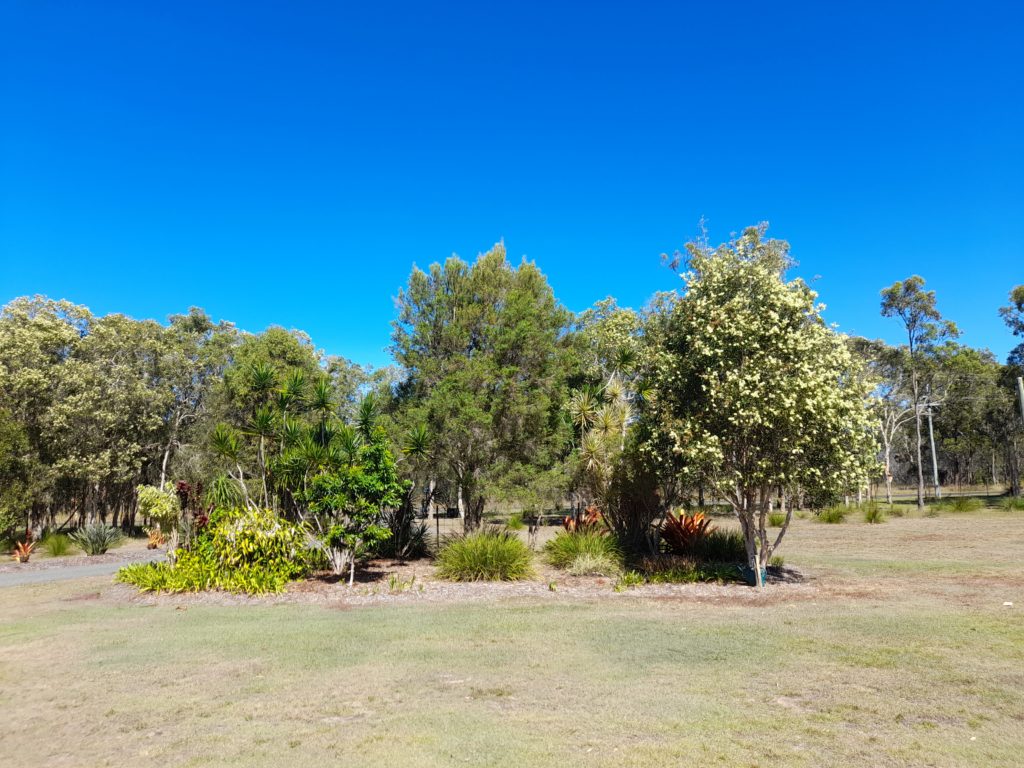
We are blessed to have hundreds of Mel’s family on our 5 acres. Currently in full glorious pale yellow bloom, they bestows many gifts (as well as a bit of a hayfever challenge at times). Adored by bees, ants, spiders and other critters, her flowers are rainbow lorikeet magnets at the moment. Humans too can sip the flower nectar from the flowers directly or infuse in hot or cold water as a refreshing, nourishing tea.
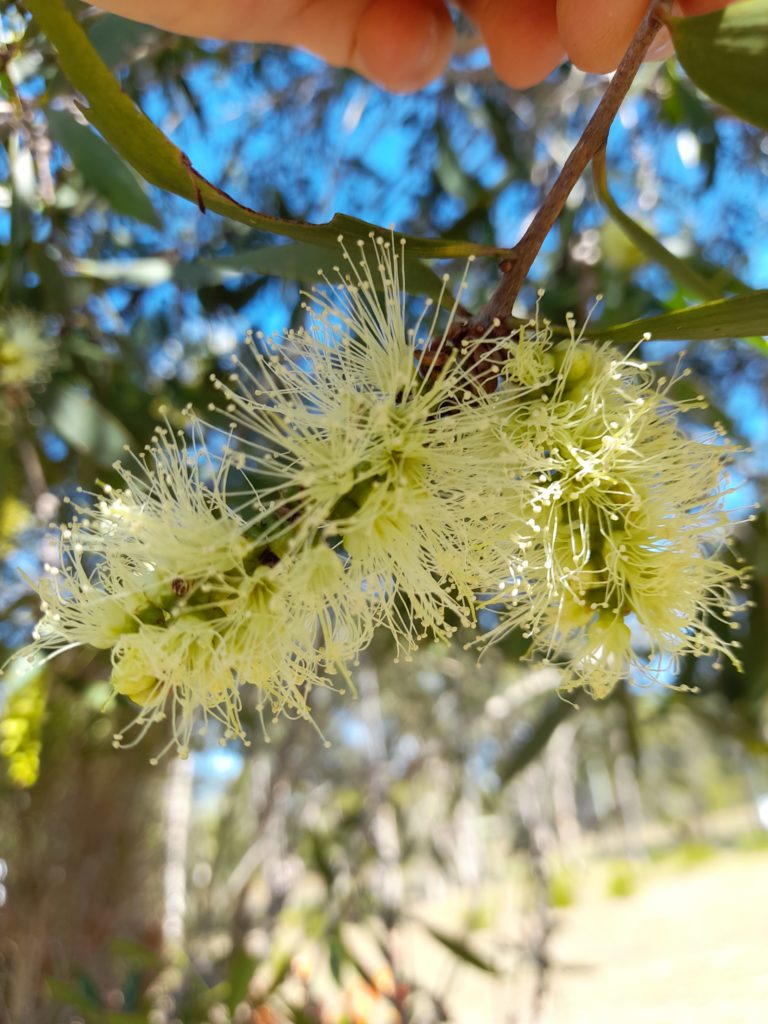
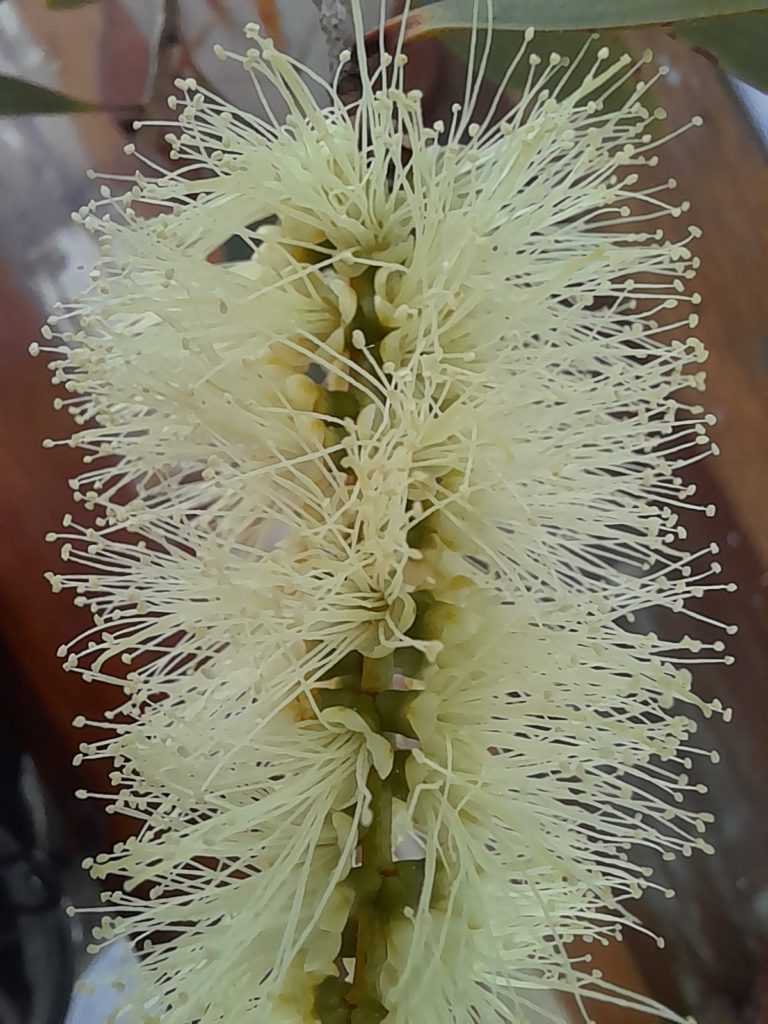
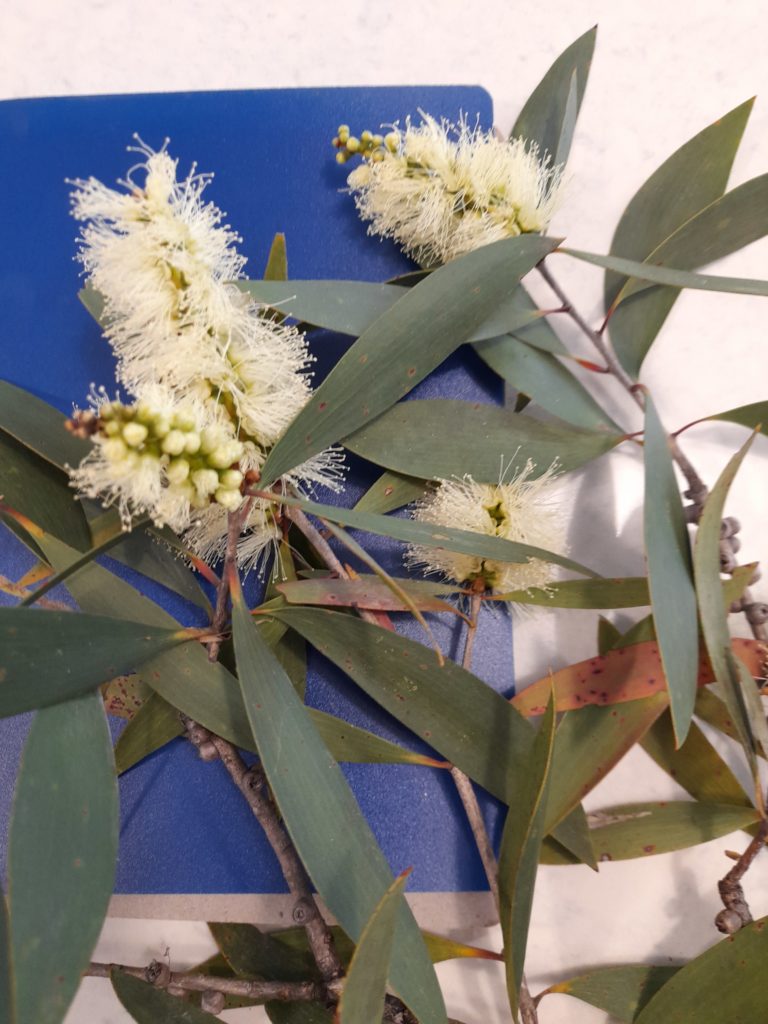

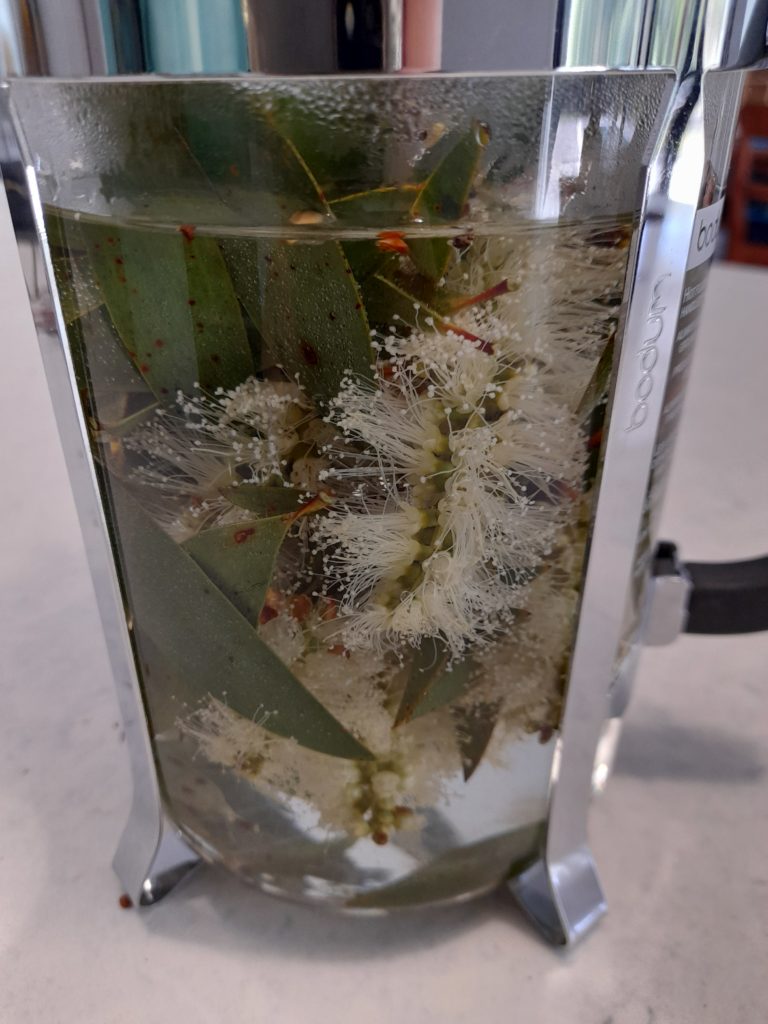
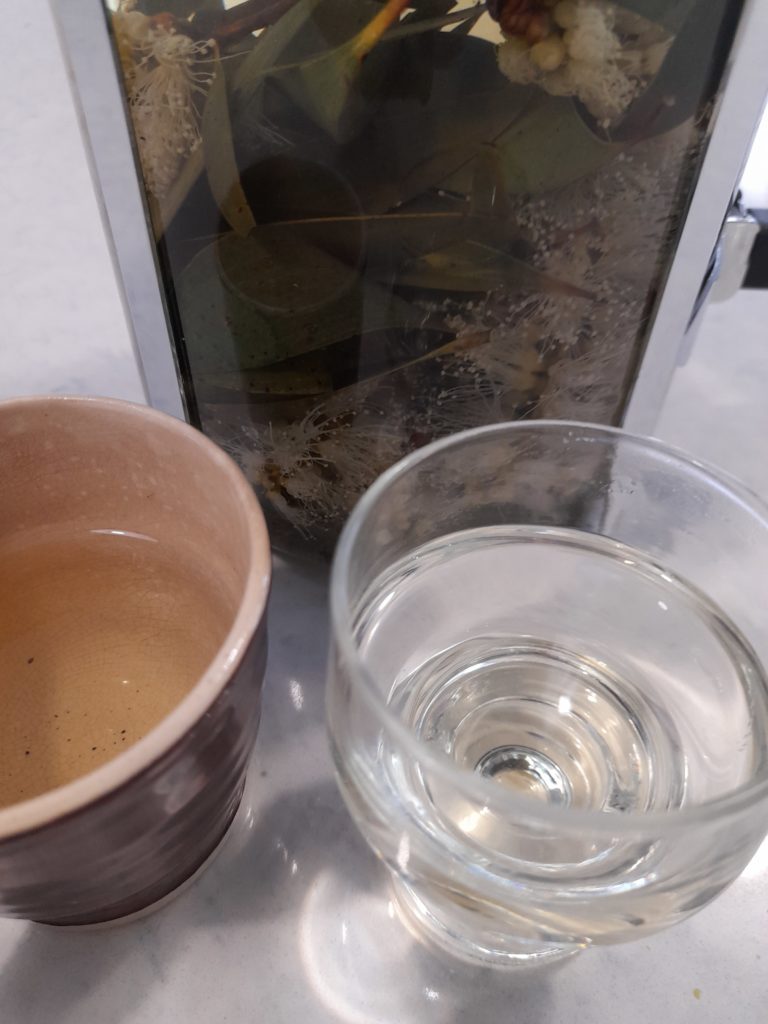
Mel’s leaves can be freshly crushed and inhaled to relieve cold symptoms like nasal & bronchial congestion. The aroma is characteristic like no other with hints of eucalypt, tea tree, cardamom & lemon. The essential oil in the leaf gives this aroma which is high in nerolidol & linalool.
The aroma is sweeter and floral as opposed to the more antiseptic Eucalyptus-like smell of the cineole rich oils (the main essential oil in Eucalyptus oil). Do NOT take the essential oil internally. (from Herbs of the Aborigines by Andrew Pengelly, in the Australian Wild Herb Bulletin Vol 4, Issue 1, April 2002)
Dr Andrew Pengelly – writing in the 2018 newsletter of the Indigenous Plants for Health says:
“The common chemotype is comprised of E-nerolidol (74–95%) a sesquiterpene alcohol, and linalool (14–30%). Another chemotype, known as niaouli oil, is high in 1,8-cineole.
Niaouli also occurs in New Caledonia, the main commercial source of this oil.”
The leaf tea can be ingested in small quantities for headaches and general illness. Tea infusions and the essential oil (nerolidol chemotype) can be used externally for neuralgia (nerve pain), rheumatism (arthritis), minor burns & as a mosquito repellent. The leaves also contain tannins, triterpenes and saponins (anti-inflammatory effect).
(I prefer the tea infused from a mix of flowers and leaves then cooled and added to soda – quite a zingy therapeutic cocktail!)
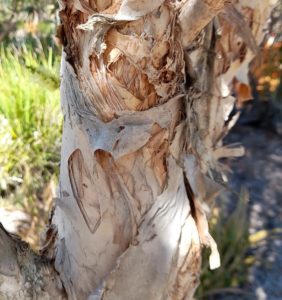
Nerolidol “itself has numerous documented activities, including antimicrobial, antifungal, antibiofilm, antiparasitic, anti-inflammatory, antinociceptive (pain relieving), anti-tumour and insect repellent.”
Mel’s bark is another gift from nature. It can be used for wrapping foods for cooking, wrapping babies, soft padding (and menstrual pads), bedding and as tinder for lighting fires. I can imagine a young baby being carefully swaddled in paperbark and furs and snuggled into a coolamon (curved vessel cut from a tree) which gently rocks as baby wriggles.
If you want to know what’s in your area that you can use, then you can purchase a pack of 71 Australian Medicinal & Edible Plant Knowledge cards from the Australian Indigenous Plants For Health Association . And if you’re passionate about native plants, you could ALSO join our Not for Profit Association for just $20 per year : )
I’ve been a member of the association for years, and have just become its President. Exciting times.
